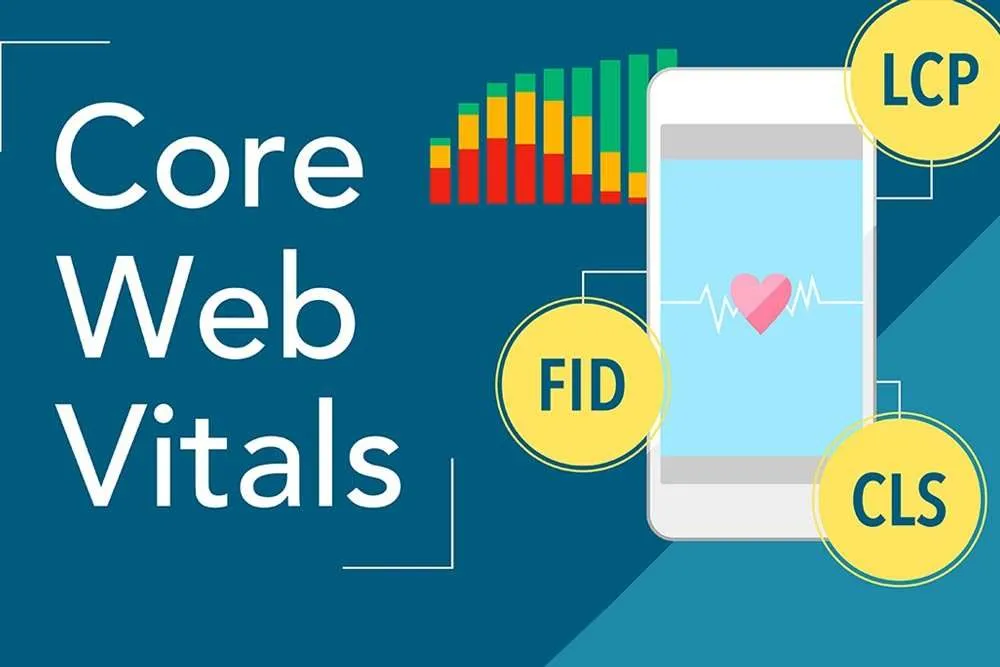
The Significance of Core Web Vitals in Google’s Ranking System
Core Web Vitals, focusing on loading time, visual stability, and interactivity, form the foundation for evaluating a website’s effectiveness. With Google analyzing over 200+ parameters in its ranking system, these metrics have gained significant prominence, highlighting their essential role in determining search engine rankings. This underscores their critical importance in enhancing website performance and visibility.
In the world of digital presence, where Google SEO reigns supreme, understanding and optimizing for these critical KPIs has become important for website owners. It’s crucial to recognize how your sites perform, as it’s essential for satisfying impatient users and meeting key web vitals requirements. To achieve your goal, you must first become acquainted with the metrics that comprise the fundamental online vitals.
Largest Contentful Paint
Core Web Vitals, a term synonymous with Google’s ranking system, encapsulates a trio of metrics that play a pivotal role in determining a website’s user experience. At the heart of these metrics lies the Largest Contentful Paint (LCP), which meticulously evaluates the duration it takes for the largest content element to load on a page. A swift LCP not only enhances user satisfaction but also resonates positively with Google’s SEO algorithm, thus elevating a website’s ranking.
Cumulative Layout Shift
Navigating through Core Web Vitals, one comes across the Cumulative Layout Shift (CLS), an indicator of visual stability during the loading process. CLS meticulously gauges the extent to which the page layout shifts unexpectedly, such as images or buttons moving, thereby influencing the overall user experience. From a Google SEO perspective, minimizing CLS is paramount to ensuring a seamless browsing experience for users and subsequently boosting website ranking.
Interaction to the Next Paint
Furthermore, the Interaction to Next Paint (INP) emerges as a critical metric in evaluating a website’s interactivity. INP has taken over FID(First Input Delay) in March 2024.INP measures the time interval from when a user initiates any interaction to when the subsequent visual update is displayed, thereby offering insights into the responsiveness of a website. Google’s SEO ranking factors for 2024 accentuate the significance of optimizing INP, as it directly impacts user engagement and retention, ultimately contributing to enhanced website ranking.
Optimal Core Web Vitals Score
| Good | Needs Improvement | Poor | |
| LCP | <=2.5s | <=4s | >4s |
| INP | <=200ms | <=500ms | >500ms |
| CLS | <=0.1 | <=0.25 | >0.25 |
Why Core Web Vitals Matter in 2024
1. Enhancing User Experience:
- Speed Matters: Core Web Vitals, notably metrics like Largest Contentful Paint (LCP), First Input Delay (FID), and Cumulative Layout Shift (CLS), concentrate on critical components of the user experience such as loading speed, interaction, and visual stability. The dwell time should outperform the bounce rate. Pages or websites must be designed to encourage a longer dwell time than the bounce rate.
- User Expectations: In today’s fast-paced world, users expect websites to load quickly and respond instantly to their interactions. By optimizing Core Web Vitals, websites can meet these expectations, leading to higher user engagement and satisfaction.
2. Impact on Search Engine Rankings:
- Google’s Emphasis: Search engines, particularly Google, prioritize user experience when ranking web pages. Core Web Vitals are now considered ranking signals, thus websites that do well in these metrics are more likely to appear higher in search results.
- SEO Advantage: Improving Core Web Vitals not only enhances user experience but also boosts search engine optimization (SEO) efforts. Websites that prioritize these metrics are rewarded with better visibility and traffic, ultimately leading to improved business outcomes.
3. Mobile-Friendly Experience:
- Mobile Optimization: With the increasing dominance of mobile devices in internet usage, providing a seamless experience on smartphones and tablets is imperative. Core Web Vitals emphasize mobile-friendliness by measuring loading times and responsiveness, ensuring that websites perform well across all devices.
- Mobile-First Indexing: Google’s shift towards mobile-first indexing underscores the importance of mobile optimization. Websites that excel in Core Web Vitals are better equipped to meet the requirements of mobile-first indexing, thereby maintaining their search engine rankings.
Conclusion
In today’s digital age, a website’s performance is not just about aesthetics; it’s about user experience and search engine visibility. SEO services for your website play a crucial role in optimizing Core Web Vitals and ensuring that your site delivers an exceptional user experience while maintaining high search engine visibility.
Core Web Vitals have become integral to the success of modern websites, influencing both user experience and search engine rankings. By prioritizing factors such as loading speed, interactivity, and visual stability, website owners and developers can create immersive experiences that resonate with users and align with search engine algorithms. Embracing Core Web Vitals isn’t just about meeting standards; it’s about exceeding expectations and staying ahead in today’s competitive digital landscape.


